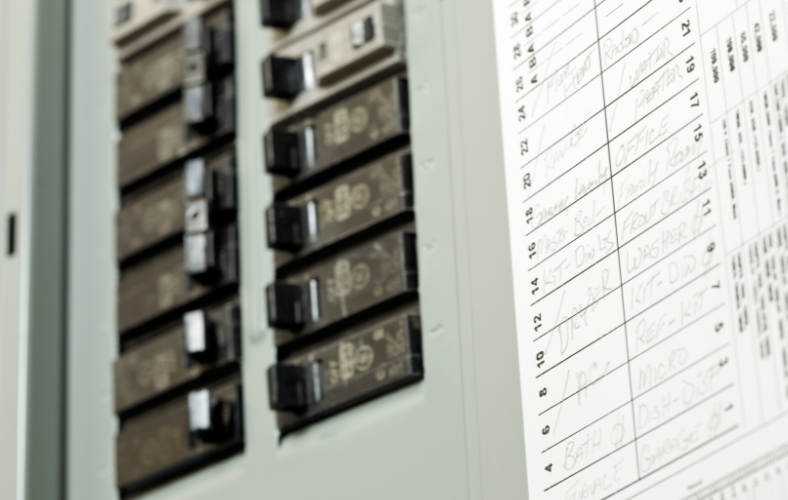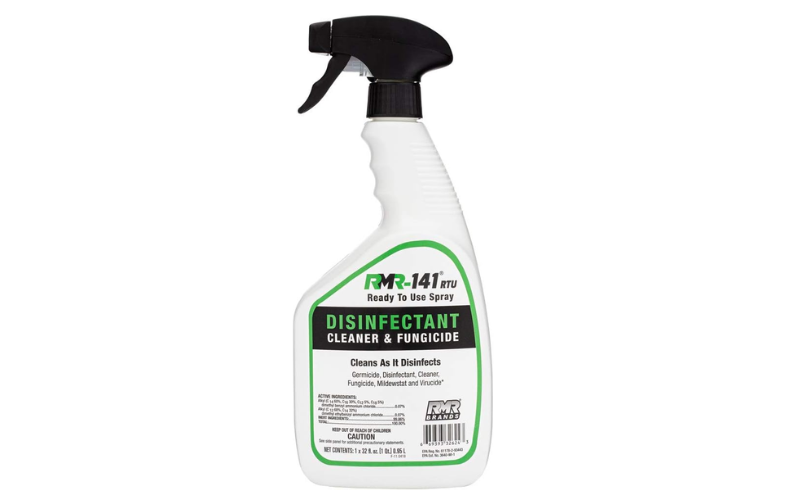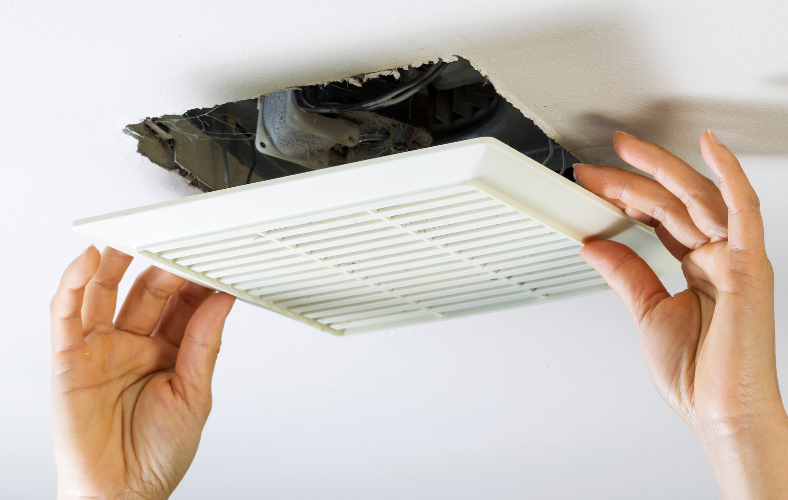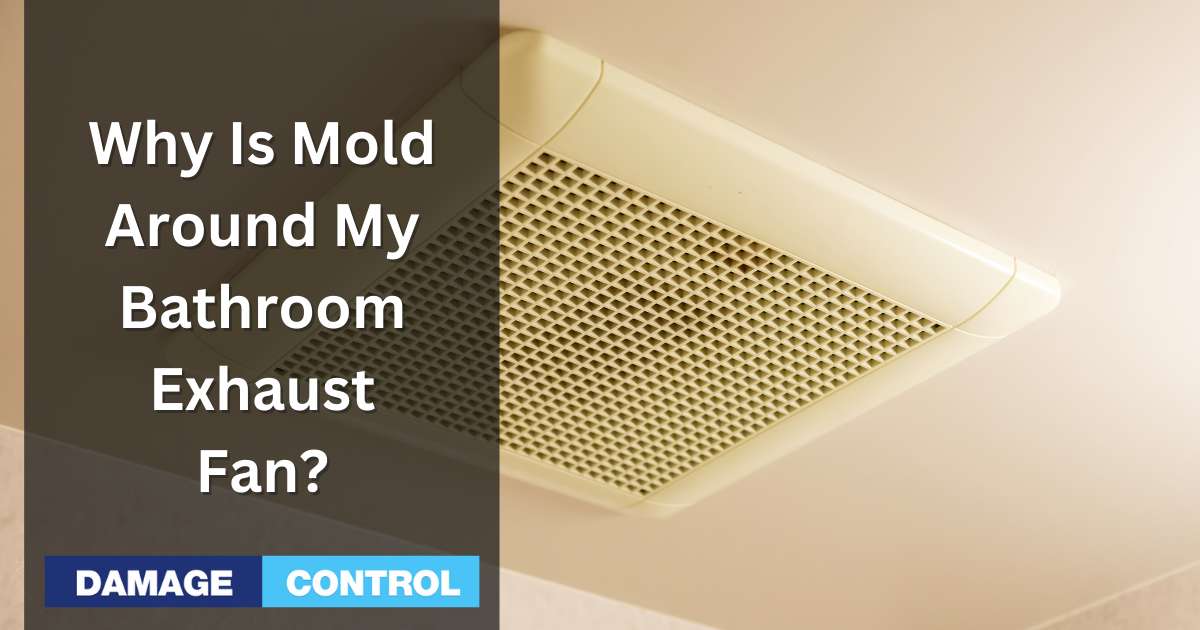Why is mold around your bathroom fan? When it comes to mold, you often hear about how the places you are most likely to encounter are where water is most often in use.
This includes places such as the laundry room, the kitchen, and especially the bathroom. Under the right (or, more appropriately, wrong) circumstances, the bathroom can become the place in the home where mold grows the most out of control.
This is why having a built-in exhaust ventilation system is important, and should be considered a must.
The only problem is that sometimes your bathroom's ventilation system can have problems of its own. When the ventilation is not working properly, it can exacerbate mold problems in your bathroom.
You may even see some mold around your exhaust fan. Here is why that may be, and what you can do to fix it.
Why Poor Ventilation Leads to Mold Growth
Mold thrives in places where there is moisture and nutrients. So long as those two things are occurring in the same area, there is a possibility that mold will grow.
Decent ventilation is actually the first defense against mold growth because it can't thrive with good ventilation. This is because good ventilation dries out areas such as the bathroom.
If the ventilation in your bathroom is poor, then mold has a better shot at growing and developing in your bathroom.
Signs of Insufficient Bathroom Ventilation
If you see mold around your bathroom exhaust fan, it means two things. First, it means that mold is likely already growing in your bathroom that you have not yet detected.
The other thing it means is that your bathroom's ventilation is insufficient.
The Shower Test
The first sign of your bathroom's ventilation being insufficient would be the presence of mold, especially around the exhaust fan. The second sign can be identified with a simple test.
Allow your shower to run at its hottest setting so that steam can build up. Run your ventilation while the shower is running.
After a few minutes, turn the shower off. You should then time how long it takes for the remainder of the steam to be caught up in the ventilation system.
It should take no more than five minutes. If there is still mold build-up or your walls are still quite wet then you know your ventilation is not doing its job properly.
The best way to ensure success with exhause fans is to use our free bathroom exhaust fan CFM calculator so you know the minimum effective size for your situation.
Bathroom Fan Size Calculator
[amazon box=”B06W2LB17J” title=”Panasonic WhisperValue Bathroom Ventilation Fan” description=”This smart solution boasts an ECM motor with SmartFlow technology, adapting to static pressure for the perfect CFM output. With the Pick-A-Flow Speed Selector, choose from 50, 80, or 110 CFM for tailored airflow. Ideal for residential construction and manufactured homes, its precision spot ventilation ensures top-notch performance. Plus, for ASHRAE 62.2 compliance, opt for the built-in Multi-Speed Control. Upgrade your space with this efficient, versatile ventilation fan today.” template=”horizontal”]
How to Clean Mold From Your Bathroom's Exhaust Fan
Turn The Electricity Off

If you want to get rid of the mold in your exhaust fan, you first need to cut its power off. This doesn't mean simply switching the fan off itself, but turning the power off at the breaker.
If you're not sure which breaker goes to your fan, the old-fashioned way is to turn the fan on, then flip breakers until it goes off.
Prepare Your Cleaning Solution

Once you have done that, you need to prepare a cleaning solution. A solution of 70% water and 30% white vinegar will do the trick.
If you're not a fan of natural based cleaners, RMR-141 Disinfectant Cleaner & Fungicide works extremely well for this.
Disassemble The Vent

You then need to disassemble the vent. Take off the vent cover and soak it in your cleaning solution. You then need to take the fan itself out.
If there does not appear to be any mold beyond the fan, then you are in good shape, because it means a quick application of cleaning solution followed by a generous scrubbing and drying should be enough to get it clean.
Scrub The Vent Cover

Scrub the vent cover clean as well. Be sure to get into the crevices. Reaching into slots like this can be difficult with only a cloth, so we recommend something similar to these microfiber detail dusters from Amazon.
Dry & Replace The Vent Cover
Dry it off and then allow it to finish air-drying. Then re-install the cover following the fan.
This will take care of the mold for now, but you may want to consider bringing in an external fan to keep the bathroom well-ventilated until such a time as you can replace the old one.
How to Prevent Further Mold Growth
In addition to the above remedies, incorporating strategies for mold-free shower drains is crucial to maintaining a healthy and odor-free bathroom environment. This involves not only addressing existing mold issues but also preventing their recurrence.
Good air circulation prevents mold growth from affecting your bathroom's exhaust fan. The best way to achieve this is by keeping the bathroom door open when not in use. Additionally, if your bathroom has a window, keeping it open or slightly cracked can significantly aid in air circulation.
Implementing these strategies for mold-free shower drains will greatly reduce the likelihood of mold returning. When the bathroom's ventilation is less than ideal, taking shorter showers is advisable. This practice helps minimize condensation build-up, a common contributor to mold growth, especially in and around shower drains.
By following these guidelines, you can ensure your bathroom remains clean and mold-free, eliminating unpleasant mildew odors.

